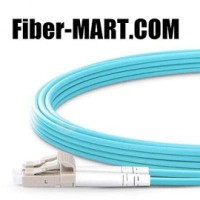PMMA Fiber Optic in Architectural Lighting Installations

Poly(methyl methacrylate) (PMMA) fiber optic technology is
revolutionizing architectural lighting installations. As a versatile and
efficient material, PMMA fiber optics are becoming increasingly popular in
various applications within architectural design, providing unique aesthetic
and functional benefits.
PMMA fiber optics, also known as acrylic fiber optics, are
made from a clear plastic that offers excellent light transmission properties.
This material is lightweight, flexible, and durable, making it an ideal choice
for creative lighting solutions in both residential and commercial spaces. One
of the key advantages of PMMA fiber optics in architectural lighting is their
ability to transmit light over long distances without significant loss of
intensity, which allows for the design of intricate and visually stunning
lighting displays.
In architectural installations, PMMA fiber optics can be
used to create a variety of effects. They are often employed in ceiling designs
to mimic the appearance of a starry night sky, with each fiber end emitting a
small point of light. This application is particularly popular in home
theaters, luxury hotels, and high-end restaurants, where an immersive and
enchanting atmosphere is desired. Additionally, PMMA fiber optics are utilized
in wall installations, where they can be embedded into panels to form illuminated
patterns or images, adding a dynamic element to interior spaces.
Another significant use of PMMA fiber optics in
architectural lighting is in the creation of edge-lit signs and panels. These
elements are frequently found in commercial buildings, museums, and public
spaces. The fibers guide light to the edges of a sign or panel, producing a
bright, uniform glow that enhances visibility and aesthetic appeal. This method
is energy-efficient and reduces the need for bulky, traditional lighting
fixtures, contributing to a sleek and modern design.
PMMA fiber optics also offer advantages in terms of safety and maintenance. Since they do not conduct electricity, they can be safely installed in wet or hazardous environments, such as swimming pools, fountains, and outdoor landscapes. The flexibility and durability of PMMA fibers reduce the risk of breakage, and their long lifespan minimizes the need for frequent replacements, making them a cost-effective solution for long-term architectural projects.
And we should pay more attention to the cable cutting: How to Cut PMMA Fiber
In addition to these practical benefits, PMMA fiber optics
contribute to sustainable building practices. They are compatible with
energy-efficient light sources, such as LEDs, which consume less power and
generate less heat compared to traditional lighting options. This compatibility
helps reduce the overall energy consumption of a building, aligning with green
building standards and reducing the environmental impact.
Architects and designers are continually exploring new ways
to integrate PMMA fiber optics into their projects. Innovative applications
include interactive lighting systems that respond to movement or sound,
creating dynamic environments that engage and inspire occupants. The
adaptability of PMMA fiber optics allows for endless creativity in
architectural lighting design, making them an invaluable tool for modern
architectural projects.

